Hollywood & Spine Archive: Watch the Skies
An overview to the novelization (and reprint) of CLOSE ENCOUNTERS OF THE THIRD KIND, originally published in August 2023.
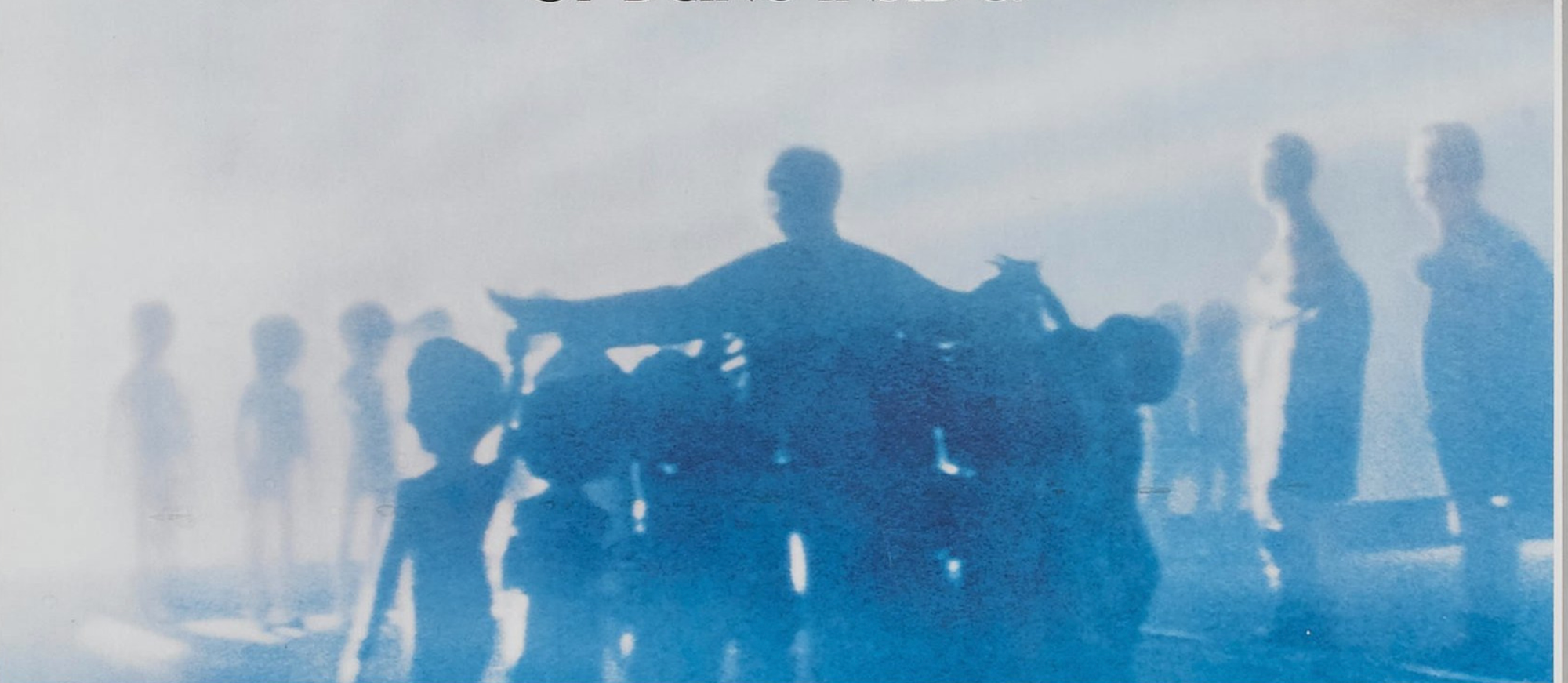
This is the most recent Hollywood & Spine I've done on an actual novel - there's an interview I'm republishing in October that's the "real" last entry so far. Perhaps I will be able to get back into the habit of reading novelizations when not taking care of my kids or working. But if not, I'm honestly proud of the body of work, coming together again on this very site. (originally published 8/23/2023)

Close Encounters of the Third Kind by Steven Spielberg (pseudonym for Leslie Waller, based on the screenplay by Spielberg) (Dell, 1977 - rev. 1980)
The pitch: Steven Spielberg's first big-budget foray into science fiction found two average strangers and a coalition of science and military personnel on a collision course toward the greatest discovery of our time: actual contact with extra-terrestrial life.
The author: Spielberg, fresh off his 1975 adaptation of JAWS that helped invent the modern Hollywood blockbuster, was for the first time working from a screenplay of his own (one of only three credits as a writer-director). The actual author, Leslie Waller (1923-2007), wrote various novels while working in public relations; under the pseudonym Patrick Mann, he wrote prose adaptations of films like Dog Day Afternoon and the television series Falcon Crest.
The lowdown: Up to this point in Steven Spielberg's career, he was merely an upstart master of spectacle, not a king of Hollywood. With that in mind, Close Encounters of the Third Kind may be his first "most personal film." Aside from being an original with roots in his childhood, it touches on so many of the themes the director holds dear: the fascination with what might live out among the stars, the angst that comes from lack of communication, the absolute innocence of children, and the angst (and collapse) of the suburban nuclear family - all Spielberg calling cards.
Five years later, he'd take many of these concepts and make an even better, even more successful picture; even in 1977-1978, the grandiosity and earthbound drama of Close Encounters took a cultural backseat to his friend George Lucas' sci-fi epic Star Wars, released six months earlier. Perhaps sandwiching Close Encounters between Luke Skywalker's galaxy far, far away and the commercial juggernaut of E.T. The Extra-Terrestrial makes this picture appear underrated. But as a huge fan of all those films at various points in my life, my affection for Close Encounters has only grown with age. This means something. This is important.
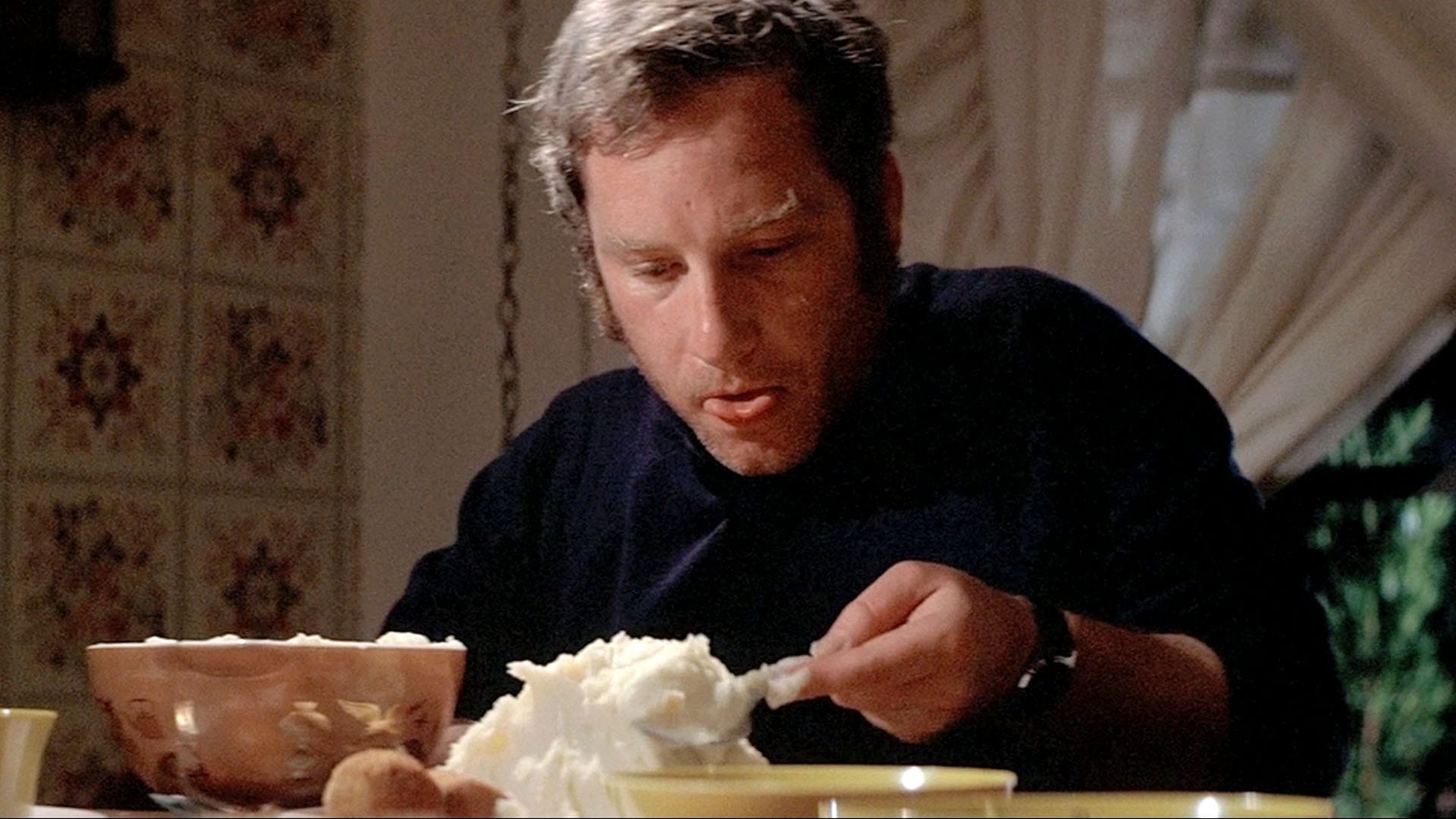
The things Steven wanted to say about himself through his art really took root in the story of Close Encounters. When electrician Roy Neary (Richard Dreyfuss) comes across a dazzling spaceship that gives him a half-sunburned face and a nagging desire to make sense of what he saw, it consumes him, just the way Spielberg's family interests consumed him. The director recalled being woken up in the middle of the night by his father Arnold, an electrical engineer, to see the Perseid meteor shower. But Neary's family misunderstands him, the way Arnold and his academically-averse son frequently missed each other. In a stunning passage of a 2017 documentary on his career, Steven shared that the painful scene when Neary's son berates his father for having a tearful breakdown was inspired by his own angry reaction to his father's tears when announcing that he and his wife Leah were divorcing. Neary's alienation from his wife and children is certainly among the director's first attempts to process that separation (taken to its natural endpoint in 2022's The Fabelmans, where the Spielberg stand-in is horrified to imagine himself camera blocking his parents' divorce discussion), and he even builds a bridge between his parents in the film's climax, combining his father's love of computing and his mother's love of music.
With such personal experiences buried in the text, it's no surprise that the novelization bears Spielberg's name alone - but as is so often the case, there were other forces at play. Spielberg himself set the record straight in a 1979 interview with Starlog:
It was very early on when we made the deal with Dell... It included an advance with a promise that I was going to have direct writing input into the book. But post-production on the movie became so impossible that I had to get somebody else to write it. I didn't write the first, second, or third drafts. Those were written, based on my screenplay, by Leslie Waller, a very good writer. When I read his drafts, though, I told the publishers that unless it was cleaned up I wouldn't let my name go out with the book. So I sat down and spent less than a week - I wouldn't say rewriting the novel - but polishing it, and taking a lot of the plot and twisting it back into the direction of the screenplay. All told, there's about 20 percent of me in the book. I wish I could say there was more, but there's not.
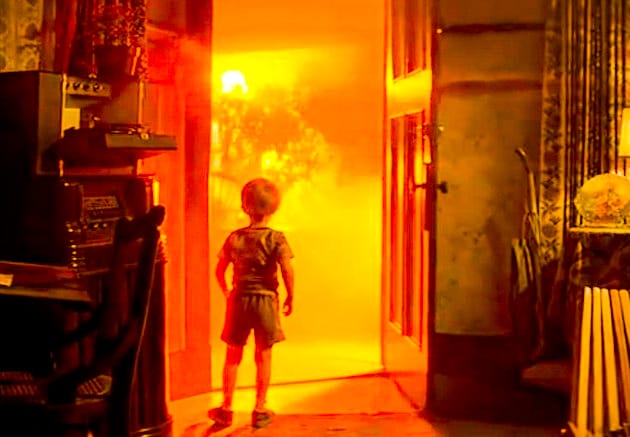
Reading Close Encounters, it's worth asking how a version of the book with more of Spielberg in it might look. (I mean this in several ways: the filmmaker, never a strong student by his own admission, was diagnosed with dyslexia later in adulthood.) In the 250-plus pages, there's the typical sort of prose additions you expect in such novels: we find out that Jillian Guiler, the mother whose toddler son is briefly taken by the aliens, is a widow - and it's evident that Neary's family is crumbling before his close encounter. (An odd recurring detail: Ronnie, his wife, has put a green light bulb in the refrigerator, ostensibly to discourage extra snacking but instead making all food in the house feel unappetizing.)
The book does a superb job of mirroring Roy's and the viewer's joint struggle to understand the significance of what he's trying to decode from the visitors. (As we'll get into a bit further down, it does a great job of expanding to Neary's own feelings about the toll on his family, as well.) It would have been nice to, on the flip side, enjoy more backstory on the chief UFO researcher Claude Lacombe (François Truffaut), a believer from the start - and, it's implied, for some time (the opening sequence where his team finds those abandoned World War II planes is said to take place four years earlier). However, this absence in the either the book or the film does little to sully the character's brilliance as an observer of these wonderful events.
Where the Close Encounters book could have used more color - and, perhaps, more Spielberg - was in describing the film's most visual elements: the climactic landing of the mothership and contact with Earthlings. This scene includes some detail that didn't make it into the film for obvious reasons; notably, there's some sort of magnetic sentry before the mothership lands that creates a gravity well in which Lacombe and his team bounce around. This offsets the final appearance of the mothership ("looked like an oil refinery, with huge tanks and pipes and working lights everywhere") and its denizens, who morph from ephemeral energy beings into physical creatures. (One of the small aliens extends a stretching arm around Lacombe in a friendly gesture.)
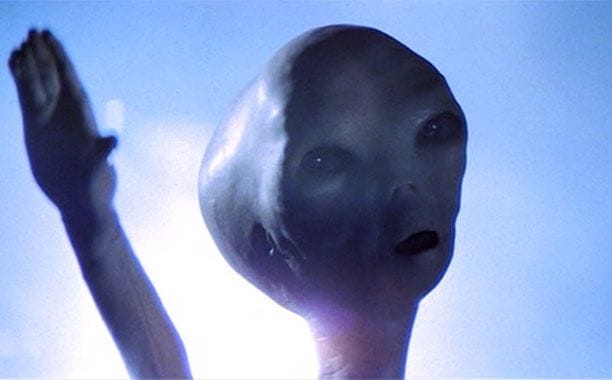
Your satisfaction with the book's denouement might hinge on what part of the film's ending you hold most dear: the spectacle of that human-alien communication, or the implications of it - that, as E.T. and Elliott would prove more explicitly years later, love and understanding are universal constructs able to cross space and physiology, if you believe hard enough. Perhaps there's less of Spielberg in this novelization than he'd like, but it wasn't nothing - and, for a man who'd not yet begun to reach the peaks of his cinematic power, that's saying something.
The cutting room floor: Close Encounters is an interesting case for novelizations as extended experiences on film. Spielberg was himself dissatisfied with the final cut of his picture, owing in part to another breakneck production that, like JAWS, went over schedule and over budget but still proved a financial success. Three years later, he recut the film as "The Special Edition," which traded some moments of character development for others and included a few newly-shot sequences, including a studio-mandated coda inside the mothership. (In 1997, Spielberg approved one more cut including essentially everything from both cuts except that coda, which looks like it was shot in a space-age hotel lobby.)
The novelization was subsequently reprinted with some expanded passages, but some of the bits of character development added back into the movie - including a longer introduction to the Neary family, where Roy fails to convince his kids to go see Pinocchio, and that heartrending scene of Roy's breakdown after creating a Devil's Tower out of mashed potatoes - appeared in the original printings as well. Unfortunately, the latter sequence is nearly ruined by a bizarre coda where Roy, snapping under his wife's anguish about his behavior tearing the family apart, suddenly rips off her top in a fit of pique and, it is implied, gets closer to his Devil's Tower vision through the sight of her bare breasts. Awful!
Both versions also feature plenty of stuff that didn't make any version of the film. After his initial encounter with the spaceships, Neary goes to the police station, only to discover that an officer on duty who also believes he saw an alien craft is suspended; he leaves dejectedly without filing a report. Lacombe and his team intercept the AirEast commercial flight that declined to report a UFO, confiscating the passengers' cameras and recording equipment as they try to figure out what was seen. Later, when the Guiler home is descended upon by the visitors, Jillian gives a panicked call to the Neary home and briefly speaks to an annoyed Ronnie. Her breakdown after her son is abducted is given greater detail, too, as the press descends on her home while she shuts out the world obsessively drawing Devil's Tower.
Perhaps the best unused sequence in either printing is an explanation of how Roy got from Indiana to Wyoming in the first place, as Ronnie had taken the kids in the family car and his cash reserves were inhibited with no job. As he takes a rental car and later a short flight, he sadly reflects on the family he knows he's leaving behind - at this point, he is explicitly aware he's not coming back - and writes a jumbled letter attempting to explain his thought process to his children. (Close Encounters is perhaps the only Spielberg film from this period with real sequel potential: those children know nothing of the wonder their father felt in contacting space creatures - only the horror and confusion of abandoning him to his mania. How does this play out through the rest of their lives? Is it too sad to consider? Probably.)
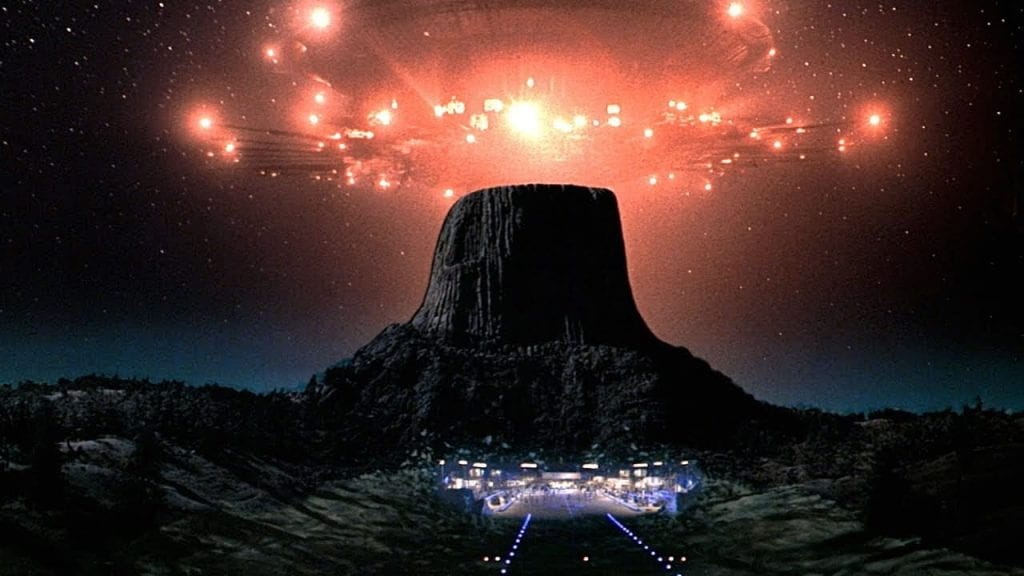
The Special Edition novelization makes big changes in only two chapters. First, there's an extra coda to Neary's initial encounter with the spaceships, in which one causes a Shell station to go haywire. (This feels like it has roots in an early, wisely unused concept that many of the ships would resemble neon signage for McDonald's and other highway attractions.) That same chapter also includes another newly-shot sequence in which the UFO team finds the SS Cotopaxi in the Gobi Desert, transplanted there by the visitors.
Much more is added in the special edition's final chapter: after that zero-gravity sentry, a series of "cuboids" - alien manifestations of moving, absorbent light - pass through Neary, Lacombe and others - including a pipe-carrying researcher who is almost certainly the film's technical consultant, J. Allen Hynek. (He pens an afterword in both editions explaining the meaning of the film's title and resources on ufology). Lacombe offers a moving speech to the volunteers before they board the ship. ("You must never lose yourself so utterly that you do not remember from whence you came," he says. "You are us. You are our couriers, our delegates, our representatives. And one day, you will return.") And then there's the finale inside the mothership, a sub-2001 description of expanding spaces and lights that offers Neary a final sense of belonging but little else to the reader. As with many of Spielberg's post-game editorial decisions, he's quite aware that his first thought was his best thought.
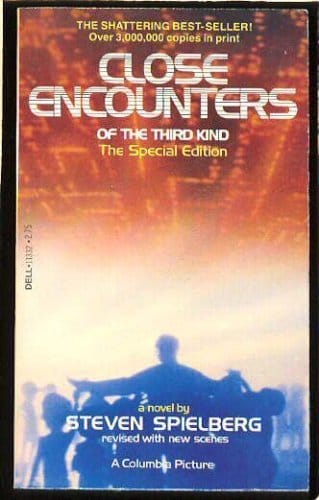
Some final, odd detail shifts in the Special Edition novel: a scene in which Roy and Jillian refill the tank of their rental car in Wyoming has gas prices rewritten as twice the price between 1977 and 1980, and the film's synthesizer is accurately changed from a Moog to an ARP. (In both editions, it's explicitly stated that the government acquired the synth set-up from two men matching the description of Robert Margouleff and Malcolm Cecil, whose TONTO synthesizer was utilized extensively by Stevie Wonder on many of his '70s albums.)
The last word: Even if it's not as perfect as the fifth in those last of five tones, the Close Encounters novelizations (either of them!) are worthy of this classic film - and even the name of the man who made it possible.
